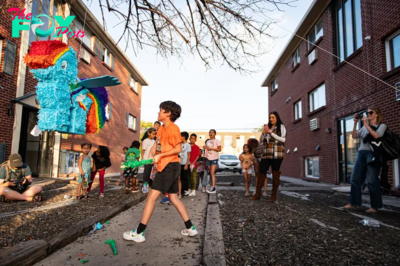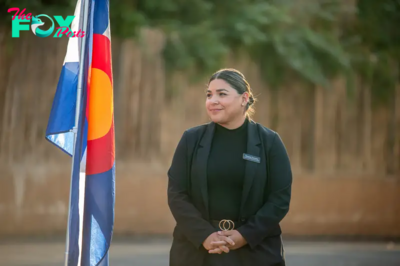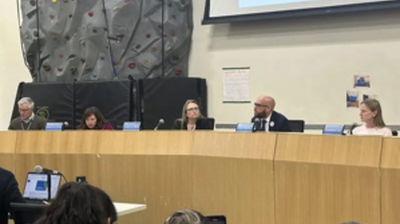Education
Mothers, metaphors and dyslexia: What language reveals about the challenges of a child’s learning disability
Alarm bells. Red flags. A labyrinth.
These are just a few of the metaphors that mothers of children with dyslexia use to describe the journey from noticing their child’s literacy challenges to receiving a diagnosis and then advocating to secure services to help their children succeed. By paying attention to the images used in these metaphors, teachers and administrators can better understand the difficulties parents and children face and learn to be more responsive.
In 2021, as my child entered third grade, I was sure she had dyslexia – a learning disability that can affect reading, writing, spelling, memory and organization. For advice and encouragement, I turned to an online support group for parents of children with dyslexia, which affects between 3% and 7% of the population worldwide. I noticed that when the mothers in the group described their experiences in social media posts, they frequently used metaphors.
As a communication researcher, I wondered what lessons about this experience could be drawn from this use of metaphors – a figure of speech that makes an implied comparison, such as “heart of gold” or “a roller coaster of emotions.” I decided to find out. It turns out, the mothers’ metaphors not only reveal much about the challenges these parents face, but how to help them overcome those challenges as well.
A closer look
Over a six-month period in 2022 and 2023, I analyzed 579 posts by members of the online support group. The posts, all written by mothers, were selected from thousands by eliminating those that simply shared resources or motivational quotes.
The mothers who posted were often overwhelmed by their child’s diagnosis. They wrote of learning to cope with the pain of seeing their child struggle and the difficulty of working with school systems to get their child needed support. They used metaphors to make sense of their emotions surrounding the dyslexia diagnosis, their interactions with schools and their identity as advocates.
The metaphors provide clues to improving the way schools work with children with dyslexia – and other learning disabilities – and their families. For instance, knowing that many mothers describe the process of obtaining support for their child as a “labyrinth,” schools could focus on reducing bureaucratic barriers and providing clearer, more accessible pathways to intervention.

Motherly instincts
Mothers often describe the early stages of this journey – before a child’s diagnosis – as knowing something is wrong but being unable to put a name to it. “Looking at his spelling and reading with him is setting off my alarm bells,” one mother commented. Said another, “Are these red flags or just me reading too much into things?”
Once the mothers had a word – dyslexia – to identify the cause of their child’s difficulties, they dived headfirst into research, seeking resources to help their child succeed. Many compared this experience to being “caught in a whirlwind” of new information.
“I am in overdrive googling, reading, watching videos and reaching out,” said one mother. Another called the diagnosis an eye-opener. “We are beating ourselves up for the times we saw his refusal to do spelling words or writing as being lazy or not caring.”
Mothers encouraged one another to trust their instincts. One admitted, “I knew in my bones something was wrong.” Another mother commented: “Stick to your gut. If you have any inkling that your child is off track, do not wait for anyone else to step up — be your child’s champion.”
Navigating schools
Although children with a diagnosed disability are entitled to an individual education plan, or IEP, getting help from the school district for a child with dyslexia, or another learning disability, is often difficult. Many mothers compared this experience to navigating a maze or a labyrinth in which they encountered numerous obstacles. They commonly characterized the complicated, tiring series of steps required for securing an IEP as “a lengthy journey,” “jumping through hoops,” “a charade” and an “uphill battle.”
They often viewed the educational system as intimidating and unyielding. The maze metaphor emphasizes the confusion many parents feel when trying to understand the jargon and legal terms they must use to secure educational support.

The resistance mothers encountered largely reflects the high costs of special education services, which, coupled with a lack of funding, spreads school resources thin. While schools will conduct an evaluation to determine if a child qualifies for additional help, they do not provide a detailed diagnosis, and such evaluations often take place after a child has fallen behind academically.
An educational psychologist can provide a diagnosis of dyslexia after an extensive evaluation process, but this testing is expensive, costing as much as US$5,000, depending on the location and the specialist selected. To further complicate the situation, a private diagnosis does not guarantee support from the school district.
Showing the way
The mothers’ language serves as a guide on how to approach the process. They warn each other not to delay raising concerns: “Do not get buried in the wait-and-see approach, this is a wait-to-fail approach,” urged one mother. Another mother advised, “You have to be the squeaky wheel – squeak with data and the law under your belt.”
Research shows that providing supports for children with dyslexia is more than a request for an accommodation; it is a battle for Educational equity. Children whose dyslexia is not recognized may be viewed as less intelligent and less motivated by teachers and other children.
As a result, dyslexic children may not thrive socially, emotionally or academically.
Reframing dyslexia through metaphors
Mothers use metaphors of distance to convey that dyslexia is a long-term journey that requires sustained effort, patience and endurance.
“This is a marathon, not a sprint, and we are on the right course,” wrote one mother. “It’s a tough, long slog, do not forget to celebrate the small victories along the way,” said another.
The language shows the difficulties that mothers face not only in securing vital support services for their children, but also in learning to support and accept their child and the way dyslexia impacts them.
Focusing on the whole child, instead of the child’s limitations, can help mothers see that dyslexia is just one aspect of their child’s identity. “We can’t fix them because they are not broken,” wrote one mother.
Despite the challenges, many moms agreed that “dyslexia is a gift not opened in school.” While traditional classrooms may overlook their children’s talents, they noted their children’s creativity, resilience and “outside the box” thinking. They hold onto the hope that their children will find places where they can flourish.
-

 Education2d ago
Education2d agoColorado schools commit to protecting students ahead of potential mass deportation
-

 Education1w ago
Education1w agoBrain-training games remain unproven, but research shows what sorts of activities do benefit cognitive functioning
-

 Education1w ago
Education1w agoRacism is such a touchy topic that many US educators avoid it – we are college professors who tackled that challenge head on
-

 Education1w ago
Education1w agoHere’s what happens when a school is located near a cannabis dispensary
-

 Education1w ago
Education1w agoHow the Taliban are seeking to reshape Afghanistan’s schools to push their ideology
-

 Education1w ago
Education1w agoState Board of Education keeps pro-charter school bent after Republican wins 8th District race
-

 Education1w ago
Education1w agoDenver Public Schools superintendent proposes closing these schools at the end of the school year
-

 Education2w ago
Education2w agoThis course uses crime novels to teach critical thinking





















